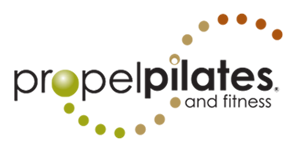Is Pilates helpful after hip replacement surgery?
Between 2000 and 2010, the number of total annual hip replacements among adults aged 45 and older doubled. This increase is credited, in part, to baby boomers looking to continue their active lifestyles. Younger adults with joint damage and pain also want to be able to continue participating in sports and other rigorous activities. Because the new and improved artificial joints have a life expectancy of 20 years or more, surgeons are more willing to perform the surgery on a wider age range of patients.
Osteoarthritis, also known as degenerative joint disease, is the leading cause of hip replacement surgery. It occurs when inflammation and injury to your hip joint cause a breakdown in the cartilage covering the end of the joint. When the condition becomes severe, there is a complete loss of the cartilage surrounding your hip joint, resulting in friction between bones. You may experience pain at rest and/or pain even with limited motion.
In joint replacement surgery, your orthopedic surgeon removes the damaged hip socket and femoral head and positions new metal, plastic, or ceramic joint surfaces to restore the function of your hip and relieve your pain.
Exercise after your surgery is the key to a quicker recovery and a return to your everyday activities. Pilates exercises are particularly helpful for strengthening those muscles that have been traumatized due to the surgery as well as muscles that have been under-utilized prior to the surgery, leading to muscular imbalances.
Restoring your quality of life
By following a structured program of targeted Pilates exercises, you can begin to restore your strength, mobility, flexibility, and balance after surgery. Before beginning any exercise program, talk to your surgeon about what kinds of exercises to avoid. And, make sure that your Pilates instructor is familiar with the anatomy of the hip and the type of Pilates that is recommended for your new hip joint.
After surgery, the muscles surrounding your new joint are going to be tight and sore. These muscles are part of your “core” muscles, and are critical to your mobility. There are many Pilates exercises that help to strengthen your hip in different planes of movement. Why is this important? Because it helps to build balanced support at the back, front, and side of your hip so it can function more efficiently.
It is also important to move your femur within the hip socket or acetabulum to keep the connective tissue pliable as it strengthens. Circular movements will help to glide the ball at the end of the femur around the acetabulum, allowing your hip to move more freely.
The benefits of Pilates equipment
Pilates equipment, such as the Reformer and the Springboard, allow you to work in positions that are more comfortable for you as you recover from surgery. The spring-based resistance can provide assistive support and become increasingly more challenging as you progress.
Propel Pilates, located in Rancho Bernardo, offers a wide range of Reformer classes for beginners to advanced students. We offer private one-to-one, semi-private sessions, and classes with two to six students. Visit our website to check out our class schedule.
